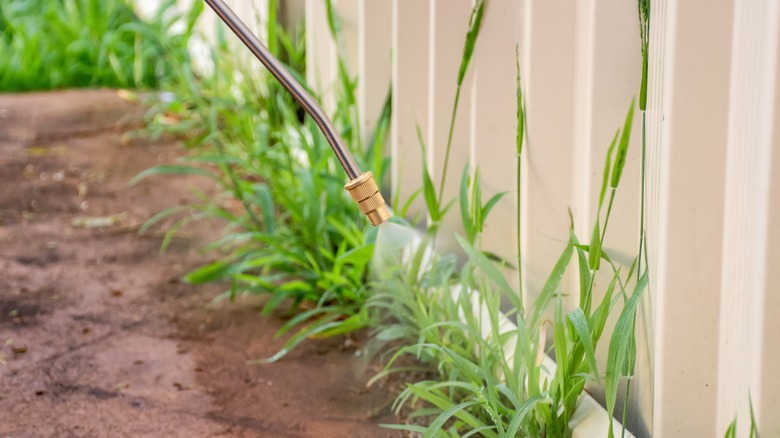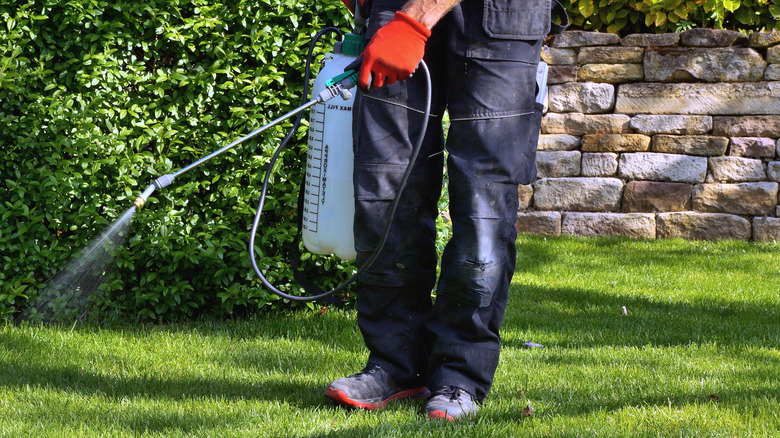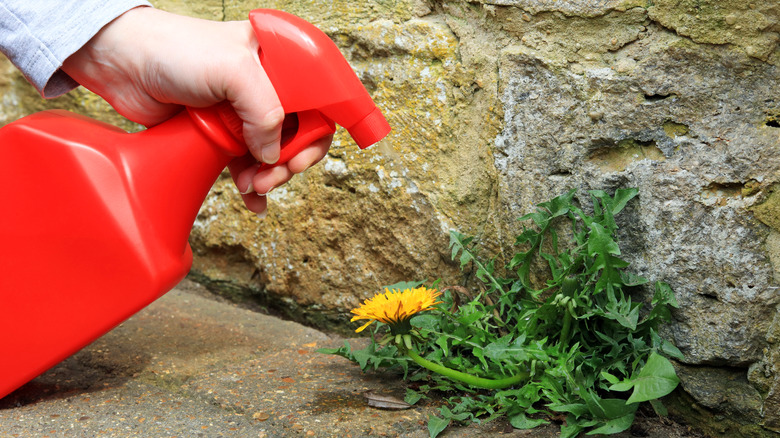Can't Get Rid Of Weeds No Matter What You Try? Here's The Reason Why
Once weeds begin growing, it doesn't take long for them to take over your entire lawn. This results in an unsightly yard that not only attracts pests to your home, but can also deter potential home buyers. As a result, most homeowners take action right away when it comes to weed growth. Some turn to professional lawn maintenance experts, while others choose to tackle the problem themselves. If you prefer to remove your own weeds, you might find that they either keep popping up, or do not die in the first place. This is often due to improper weed killer use. You need to reapply weed killer at least twice a year and follow application instructions for the product to work as intended.
Unfortunately, applying weed killer is not as simple as just spraying it onto the weeds you see. You must follow a specific technique to prevent the pesky unwanted greenery from regrowing. If you sprayed your lawn once and your weeds stuck around, you might need to make changes to the way you apply weed killer to finally see results.
Use the right weed killer and apply it more than once
While you should apply weed killer at least twice a year, keep in mind that your yard may require more than two treatments throughout a few months depending on your individual needs and the type of weed killer you purchase. It may take 7 to 14 days for the weeds to begin dying even after the spray is applied. Refer to the packaging for the recommended application instructions for your specific formula.
One of the most important first steps to making sure your weed killer works effectively is to identify whether the formula is labeled as pre-emergent or post-emergent before you make your purchase. Pre-emergent weed killer is only effective if you spray it on the appropriate areas before weeds actually sprout. This means that this type of weed killer should be used on weed seeds rather than visible weeds. As you may have already guessed, post-emergent weed killer is intended for use on existing weeds that have already grown. If you use either of these formulas at the wrong time, you probably will not notice much of a change in the common garden weeds around your home.
Select a weed killer that is effective but will not cause damage
Before heading to the store to purchase weed killer, you need to decide which type will actually get rid of the weeds you have around your home without causing damage. Selective weed killer is a great choice If you are trying to kill weeds in a lawn or garden where there are other plants or grass you would like to keep thriving and healthy. As the name suggests, this type of weed killer will only target the weeds you want to kill without impacting other nearby plants.
Contact weed killer is another good option for those who want to target weeds surrounded by grass or plants. This should be used on annual weeds, such as chickweed or crabgrass. Non-selective weed killers can be used on weeds that grow between concrete or any other areas without nearby greenery. If you opt for this kind of formula, keep in mind that it will kill any plant that it comes into contact with. Take proper precautions to protect nearby plants.


